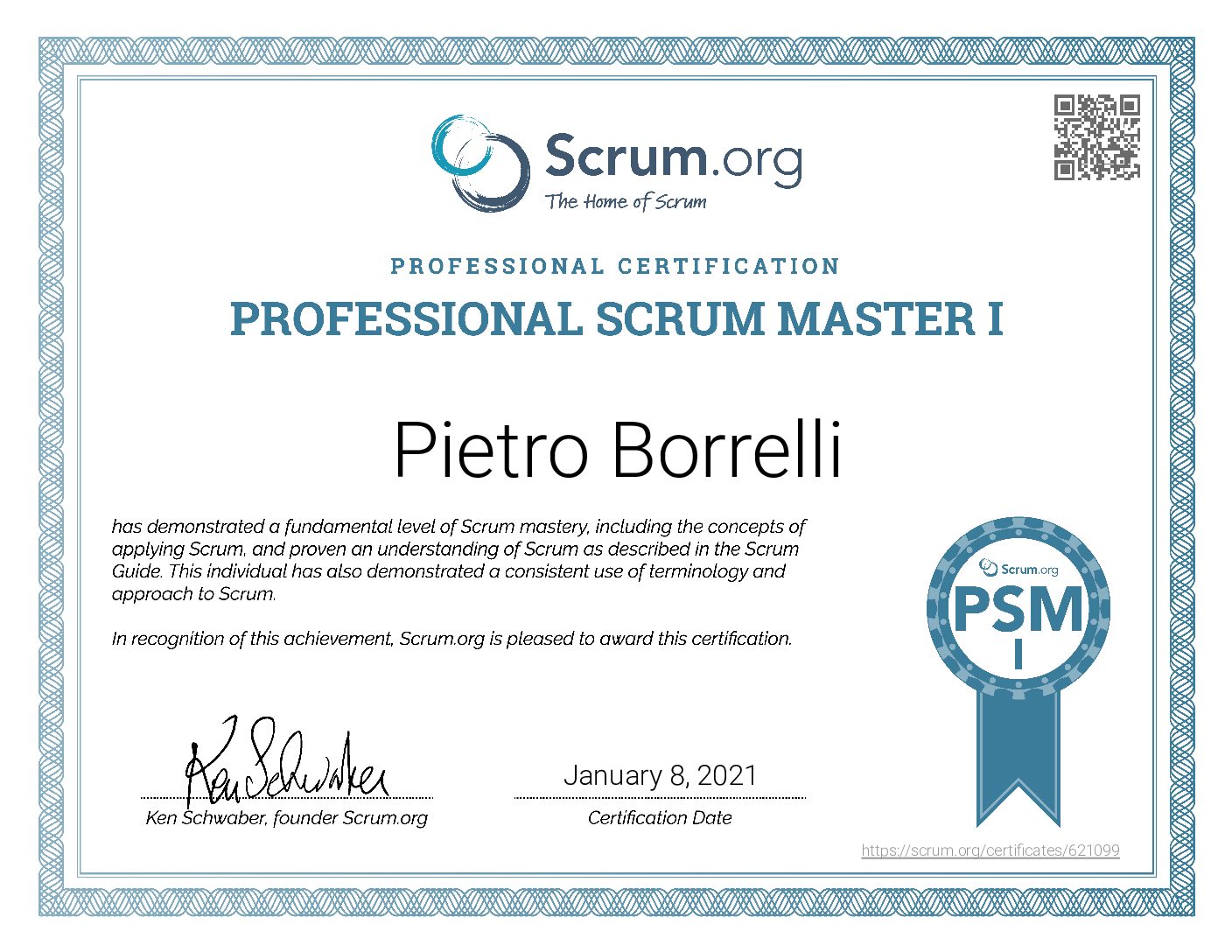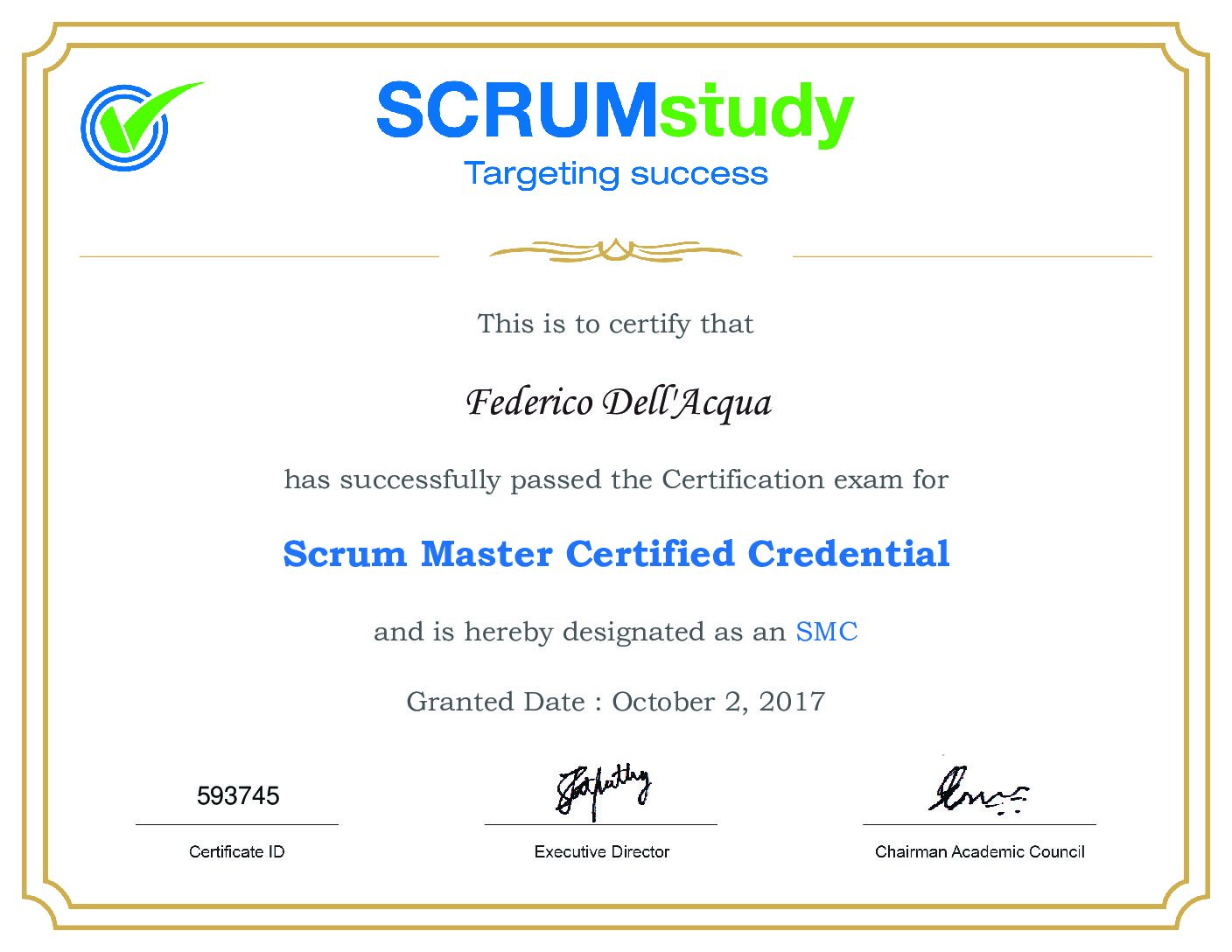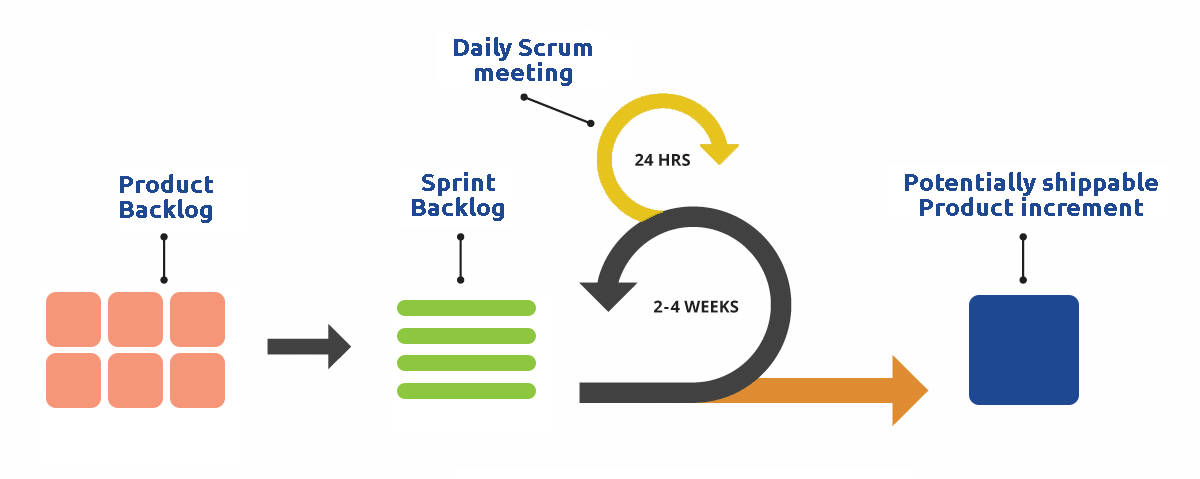SCRUM MASTER Certification
Federico Dell’Acqua (Digitelematica CEO) and Pietro Borelli (Digitelematica Software Developer) have obtained the SCRUM MASTER certification


In DigitelematicaTM we strive to find the most suitable method to manage our team and deal with our client projects as more efficiently as possible. In this way, we have the opportunity to improve our skills and productivity.
Currently, we are working on completing the implementation for the Scrum methodology. This is the most common agile mindset for developing and guaranteeing a continuous interaction with the client. The purpose is to ensure customers a quality product based on their needs.
The main features of the agile mindset are:
The Scrum methodology is specifically distinguished by:
Compliance with these principles is ensured by the organization of roles, artifacts and events.

The group is formed by a development team consisting of 5-9 people, a Scrum master who is responsible for the whole process, facilitating the activity of the team and managing the brainstorming meetings and a product owner who knows the product requirements and protects the interests of all stakeholders.
These roles have at their disposal three features: product backlog, sprint backlog and increase. The first is a document that contains the list of all the requirements necessary for a project and it is the main asset of the product owner. The second defines all tasks to be completed in each sprint, i.e. each phase characterized by a new feature. The increment is the sum of all elements of the product backlog completed during a sprint or previous ones.
Activities are managed through:
This methodology, born in an IT context, is suitable for the management of all innovative and complex projects and facilitates the interaction between the project manager and the team of professionals with multi-disciplinary skills, to the benefit of the client.
The result is a faster, more transparent and satisfactory realization of the project entrusted by the customer.
To learn more visit the website:
scrumguides.org
Federico Dell’Acqua (Digitelematica CEO) and Pietro Borelli (Digitelematica Software Developer) have obtained the SCRUM MASTER certification

